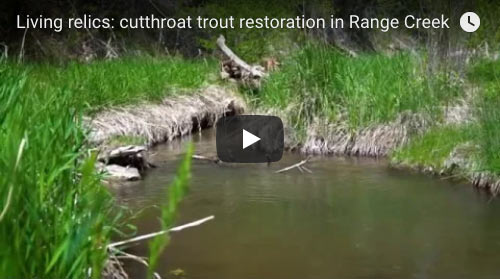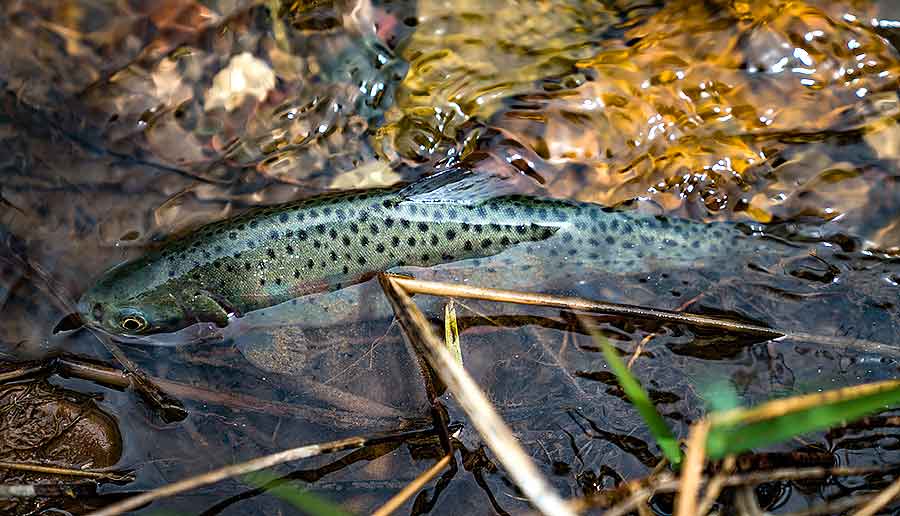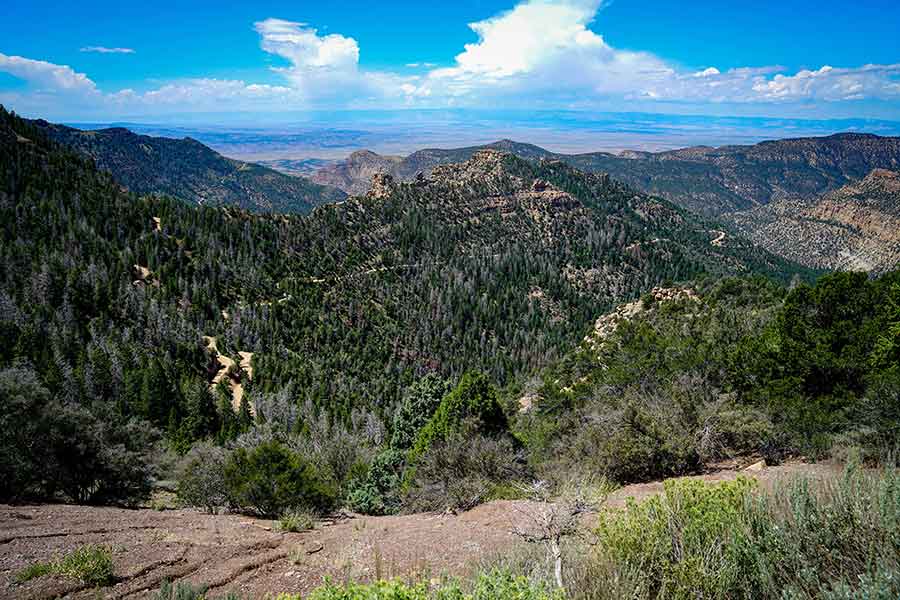Living relics
Range Creek welcomes back the Colorado River cutthroat trout.
Morgan Jacobsen
Southeast Region conservation outreach manager
One thousand years ago, a Fremont Native American stood precariously on a precipice of sandstone and dangling shrubs. Though remote and inhospitable, this was a regular destination for him, a place of relative safety and perspective.

Here, halfway up the cliff, he used stones and small trees to build an altar-like structure for securing food and other precious things. Here the sandstone served as a canvas for pictographic storytelling. And from here, he would look down at a stream that offered life and a home to him and a companion inhabitant of this desert canyon: Colorado River cutthroat trout.
Colorado River cutthroat trout predated and outlived the Fremont people. They were one of the many hundreds of relics left behind when the last Fremonts left this place, known today as Range Creek Canyon. But even these long-time aquatic residents disappeared from the canyon after the arrival of non-native fish, which aggressively outcompeted the native trout.
Similar challenges played out for Colorado River cutthroat trout in other parts of Utah until the species came close to endangerment. Since then, however, partnerships between wildlife managers, landowners, wildlife enthusiasts and others have restored these special trout to much of their native range.
This year, such a partnership restored this ancient species to its ancient home in Range Creek.

These long-time aquatic residents disappeared from the canyon after the arrival of non-native fish, which aggressively outcompeted the native trout.
Range Creek runs for 34 miles through a collection of land ownerships as diverse as the landscape itself. Corporate holdings, private ranches, federal lands and Utah Trust Lands all surround these winding miles of stream. Early on in the project, Division of Wildlife Resources biologists partnered with Trout Unlimited to unify these groups in an effort to bring back the native fish.
Years of mapping, planning and permitting followed. Then last fall, with help from many of these groups, the Division treated Range Creek with rotenone. Rotenone is a natural chemical used to remove fish that are incompatible with the management goals of a fishery. Most stream treatments that occur throughout the western U.S. encompass less than 10 miles. The Range Creek treatment, however, covered 25 stream miles and 3,000 feet of elevation difference, and biologists treated it twice.
Further ensuring the treatment's success, biologists walked the drainage with electrofishing equipment, checking beaver dams and other diversions for any sign of non-native fish. Those fish were gone. Aquatic insects and other nutrients were in ample supply. Range Creek was ready to welcome back the Colorado River cutthroat trout.
The first cutthroat entered the water on May 17. About 4,000 fish have been stocked so far this year, with 6,000 more to be stocked in the fall. As many as 20,000 additional cutthroat trout are expected to arrive over the next two years. And as these fish expand across all elevations of the drainage, they'll become one of the lowest living populations of Colorado River cutthroat trout currently documented.
Partnerships of this scale and longevity don't happen naturally. But what comes naturally to many Utahns is valuing conservation for its own sake. The Fremont people in Range Creek went to extraordinary lengths to protect what was important to them, and with similar determination, we commit to protecting Utah's native wildlife. Remote and inhospitable as Range Creek may seem, it is a place of safety for the Colorado River cutthroat trout.
Much of Range Creek is accessible to anglers. Utah Trust Lands in Range Creek, administered by the Natural History Museum of Utah, are open to public visitors with a permit, which can be obtained through the museum.















